Can Oregon stay competitive in crowded Big Ten conference?
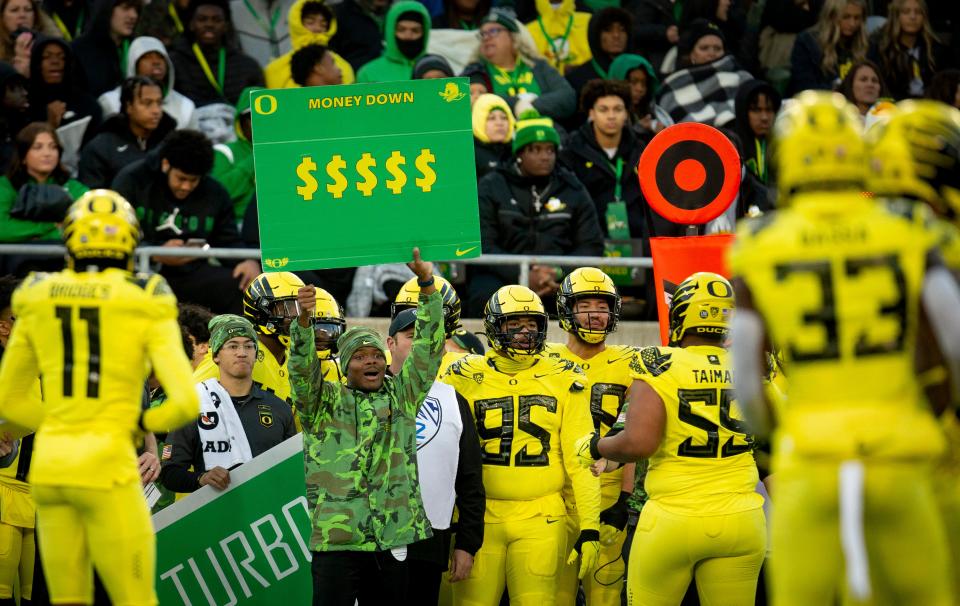
After the University of Oregon's Board of Trustees on Friday unanimously approved the Ducks' historic move to the Big Ten and their departure from the Pac-12 after this season, big questions stood out about what the news means for teams across Oregon athletics.
Washington was also approved as a new member of the Big Ten, and the pair of schools will join USC and UCLA in bolting from the over century-old Pac-12 for the Big Ten.
"We look forward to building long-lasting relationships with the universities, administrators and staff, student-athletes, coaches, and fans," Big Ten commissioner Tony Petitti said in a statement.
Oregon and Washington will be the 17th and 18th members of the Big Ten, making it the largest athletic conference in NCAA history.
Existing Big Ten member schools include Nebraska, Minnesota, Iowa, Wisconsin, Northwestern, Illinois, Indiana, Purdue, Michigan, Michigan State, Ohio State, Penn State, Maryland and Rutgers.
Arizona, Arizona State and Utah are set to leave the Pac-12 for the Big 12, leaving only Oregon State, Washington State, California and Stanford left in the conference. Colorado announced its plan to leave the Pac-12 for the Big-12 last month.
The Register-Guard looks at what the seismic changes mean for the Oregon and Oregon State rivalry, if Oregon football can stay competitive in the Big Ten, what happened to the Pac-12 and what the move means for Oregon sports.
What does Oregon’s move mean for its rivalry with Oregon State?
Oregon leadership made it clear Friday it would like to schedule in-state rival Oregon State contests in every sport, every year, if it can.
The big question is if, though.
"We have a rich tradition with our in-state competitors and that would be something that we will try to work out in every sport to continue those rivalries,” UO athletic director Rob Mullens said. “Football scheduling can be complicated because of how far out it is scheduled and the difficulty of playing non-conference games later in the year, but our goal would be absolutely to continue to play Oregon State.”
There will be room on the Ducks’ schedule in the immediate future for a non-conference matchup against the Beavers.
Oregon will likely have to make changes to its out-of-conference schedule in the coming years, which previously included a couple of matchups against future conference foes in Michigan State and Ohio State.
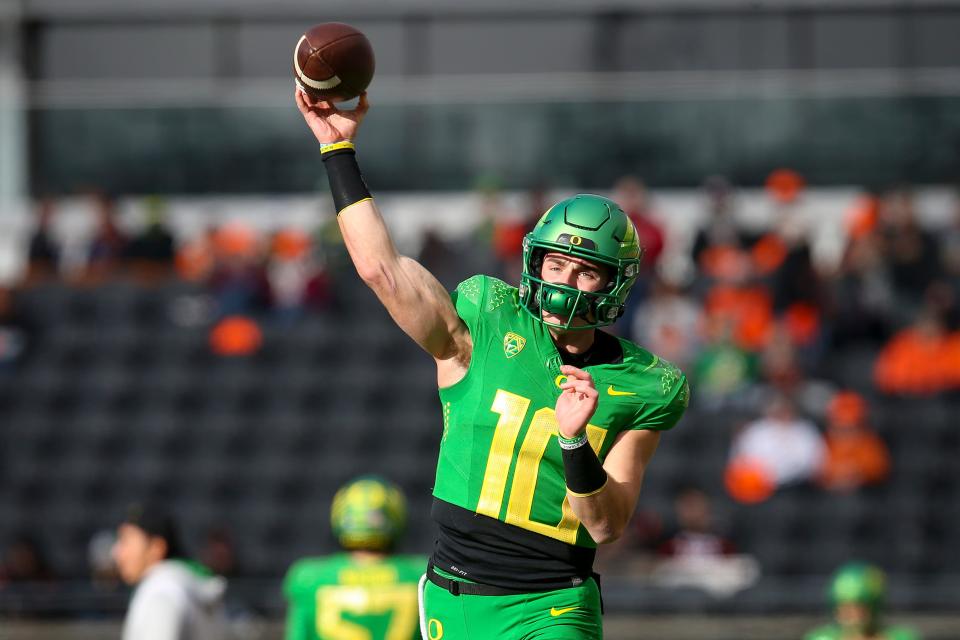
There is more scheduling flexibility in Oregon's other sports to accommodate a continued rivalry with the Beavers.
So, at least in the immediate future, the rivalry could theoretically continue if both sides are up for it.
That said, how much longer will either side want to play the game if Oregon State ends up in the Mountain West, or if Oregon’s schedule begins to fill up, and that rivalry doesn’t have the same priority it used to?
Other rivalries have found a way to continue, even with games late in the year, like Florida and Florida State and Clemson and South Carolina, despite being in separate conferences. Other rivalries, however, have died out due to conference realignment. Once a storied game, Texas and Texas A&M no longer play on a yearly basis, and Colorado and Colorado State haven’t played since 2019.
In the early stages of this change, Oregon has made it clear it wants to continue to play Oregon State.
What about the added travel costs?
Though Mullens acknowledged that travel costs to places like Pennsylvania and New Jersey — home to Penn State and Rutgers, respectively — would add up compared to the Ducks’ current slate of conference opponents in the Pac-12, he also said he was impressed with how willing the Big Ten was to work with the West Coast schools on developing a plan that works.
While football will not suffer from the drawbacks of travel, Oregon’s sports that don’t generate revenue will have to work out a plan that makes sense.
“The student-athlete experience is our highest priority,” Mullen said. “Obviously travel is a piece of that. We don't have those details down to the fine point on charters at this point. Obviously, we know there's going to be some added travel costs and we will solve that. In our conversations with the leadership at the Big Ten, they understand the importance of scheduling and I was very impressed with how thoughtful they are to this and the impact it will have on us. I'm confident we'll find a good solution to make sure we find the right balance for our student-athletes.”
Though travel will pose some challenges, the Ducks won’t have the same issues it had with visibility they had in the Pac-12.
Pac-12 Networks endured a yearslong struggle with finding its way on TV and getting eyes on the conference. That will not be an issue in the Big Ten. Even for sports like volleyball, soccer, baseball and softball, it will be much easier to find an Oregon game on TV than it has been for the last decade.
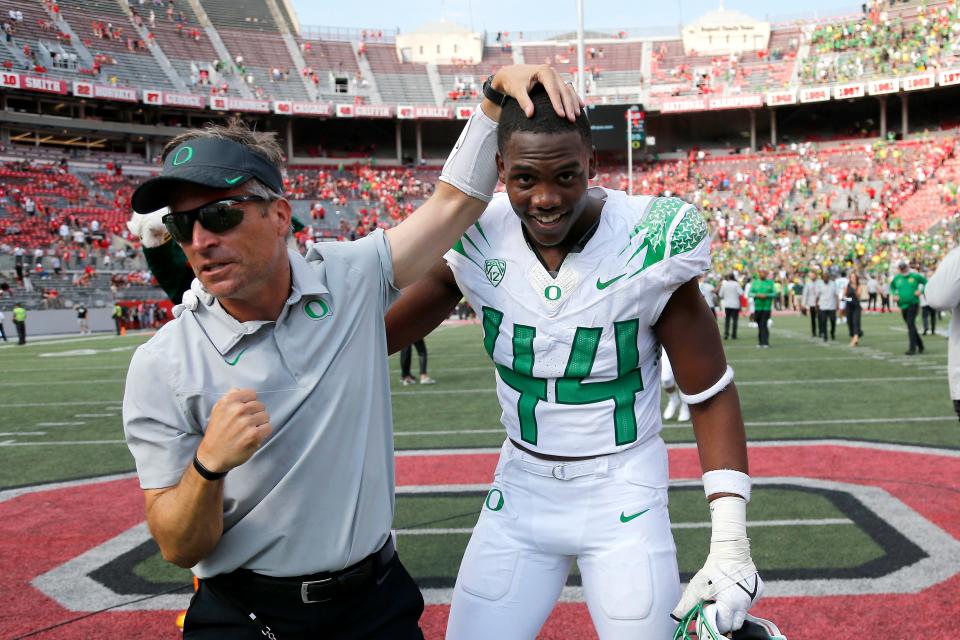
Can Oregon football be successful in the Big Ten?
The short answer is yes. The last time Oregon made the trip out to a Big Ten school, the Ducks took down Ohio State in Columbus on national television. There’s no doubt Oregon has proven it can play against the best of the Big Ten, year-in and year-out.
That said, no one really knows what an 18-team conference will look like, well, because there has never been a conference this size.
If the Pac-12 had stayed in existence, under the new expanded, 12-team playoff, the Ducks likely would’ve had an easier path to making the College Football Playoff than in the Big Ten. Conference realignment has made things uncertain, especially with the Pac-12 on the verge of total collapse, but every conference champion from the major conferences will make the playoffs in 2023.
In the Pac-12, or Pac-9, Oregon’s path to the playoffs would have been relatively simple: win the conference, or finish second, and you’re likely in.
It’s unclear how well a team needs to perform in an 18-team conference to make the playoffs if they are not the conference champion, but it’s safe to say running the table in the Big Ten will be difficult.

Why didn’t it work with the Pac-12? What changed?
Mullens also made it clear he and the rest of Oregon leadership wanted to make it work with the Pac-12. That had been the messaging for the last year since the conference was rattled by the announced departures of USC and UCLA.
But after Colorado bailed for the Big 12, and the Big Ten came calling, things changed quickly for the Ducks.
“All along we've done everything we could to find an opportunity with the Pac-12,” Mullens said. “I'd say over the last few days obviously the opportunity presented itself with the Big Ten and we appreciate that opportunity and we appreciate our colleagues in the Pac-12.
“We've been working over the last 13-14 months about getting a great understanding about ourselves, right, about our TV ratings, our social media reach, our demographics to make sure that we understood ourselves and we're prepared for the changing landscape in college athletics.”
That, and the ongoing saga with the Pac-12's negotiations over its new media rights contract, led to Oregon, and seven other programs in the conference’s departures.
Mullens and UO President John Karl Scholz confirmed even just a partial share of the Big Ten’s media rights revenue was a higher amount than what was being discussed with the Pac-12's new deal, rumored to be with Apple TV.
Scholz estimated over the next 10 years, Oregon will average out to make $50 million per year from direct media rights.
"I mean there's a number of revenue streams associated with this,” Scholz said. “There's a partial revenue share, there are proceeds from the football championship (playoff) and then there are other ancillary rights that we expect to control.”
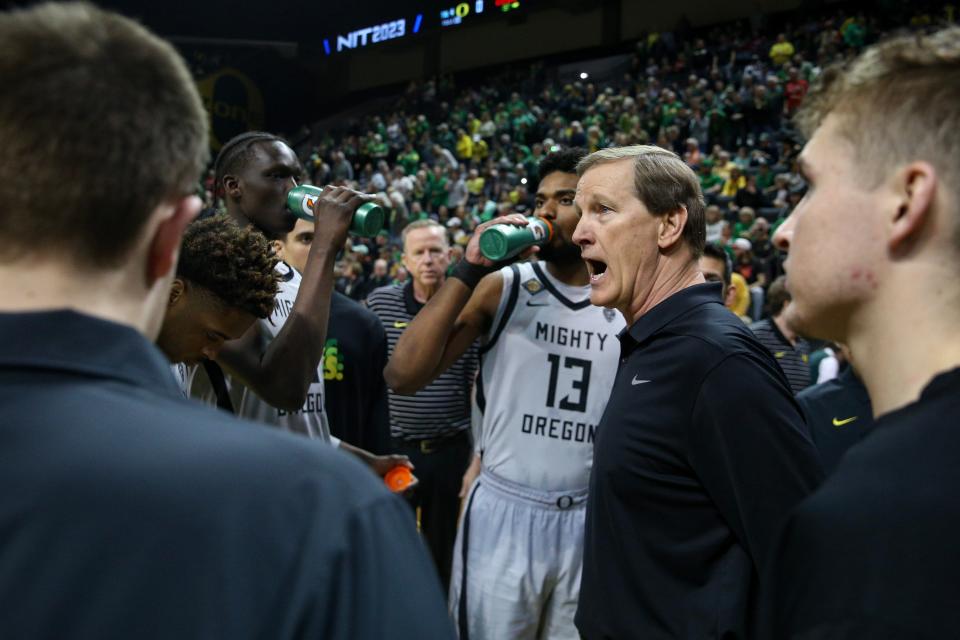
What does this mean for basketball?
Clearly this move to the Big Ten is significant for sports outside of football.
Most notably, the Oregon men’s basketball team is about to join one of the strongest and most tradition-rich conferences in the NCAA with programs like Michigan, Michigan State, Indiana, Wisconsin, Purdue — and now UCLA. Life in the Big Ten is going to be a challenge for Dana Altman’s bunch, much more than what it’s been like in the Pac-12 the past several seasons. At least the Ducks won’t have to make their annual trip to Boulder to play Colorado after this season.
For the women’s basketball team, the move feels more lateral.
Losing games against Stanford every season is disappointing, but the Big Ten is formidable with teams like Indiana, Ohio State, Nebraska and of course, Iowa, which played for the national title last season.
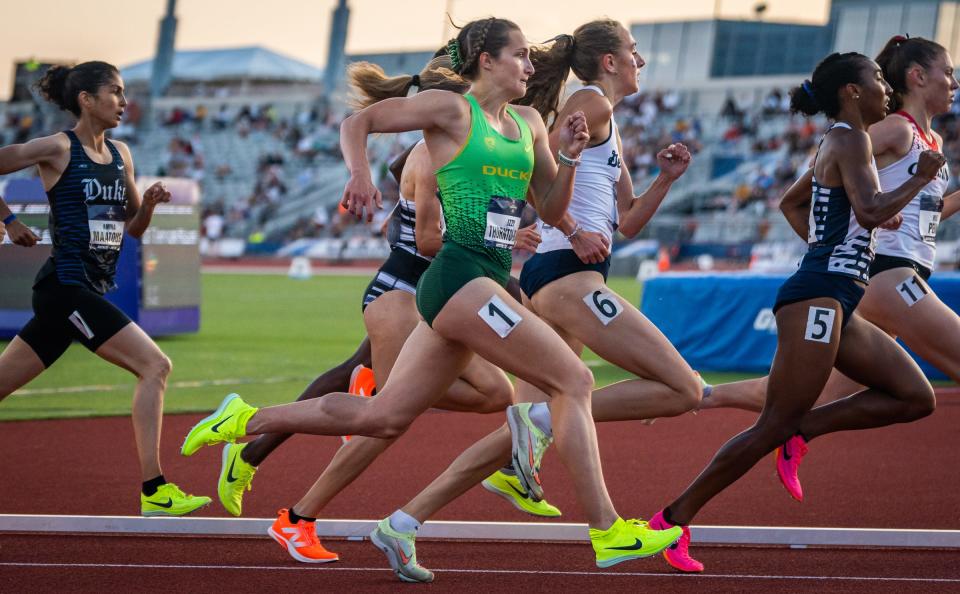
What does the move mean for nonrevenue sports?
The Pac-12 built its reputation as the Conference of Champions through its success in nonrevenue sports.
Oregon’s greatest contribution to that has been through a storied track and field program that has been relevant nationally for a century and dominant at the conference level for the last decade plus.
The Ducks men had won 15 straight Pac-12 outdoor titles before this past season, and the women have won the last two conference titles and 11 overall since 2009.
There will be familiar faces on the track with strong programs from USC, UCLA and Washington also joining the Big Ten, as well as an opportunity to compete for a conference title indoors, something the Pac-12 didn’t do.
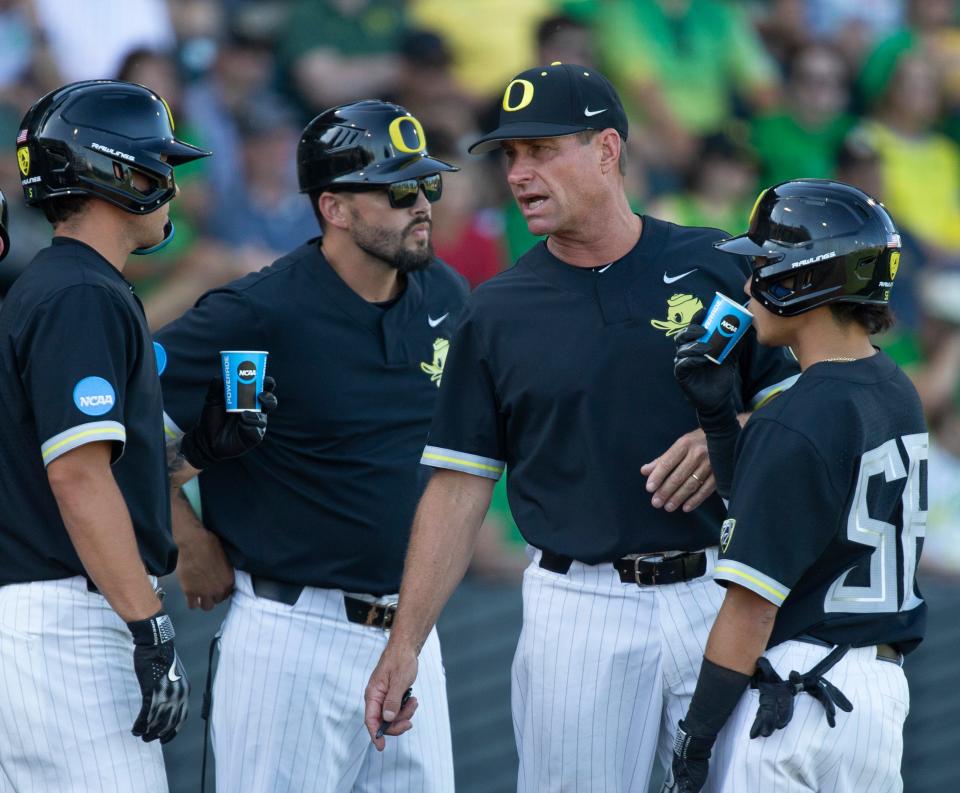
For baseball and softball, the move could lead to immediate success as the Pac-12 has been the tougher conference in both sports and Oregon’s stock is also rising in both after 2023 seasons that ended in the Super Regionals of the NCAA Tournament.
In softball, teams from the Pac-12 have won 25 national titles since 1982, with the last coming in 2019 when future Big Ten opponent UCLA was the winner. The Big Ten’s only national champion in the sport was Michigan in 2005.
In baseball, the 2023 Pac-12 tournament champion Ducks are joining a conference that last won a national title in 1966. The Pac-12 has had 22 NCAA champs since then. Coach Mark Wasikowski is also returning to the Big Ten, where he got his head coaching start with Purdue from 2017-19.
In volleyball, the Big Ten has been an elite conference with traditionally strong programs at Nebraska, Penn State, Wisconsin and Minnesota. It will only be bolstered by the addition of Oregon, UCLA and Washington. Life didn’t get any easier here for the Ducks.
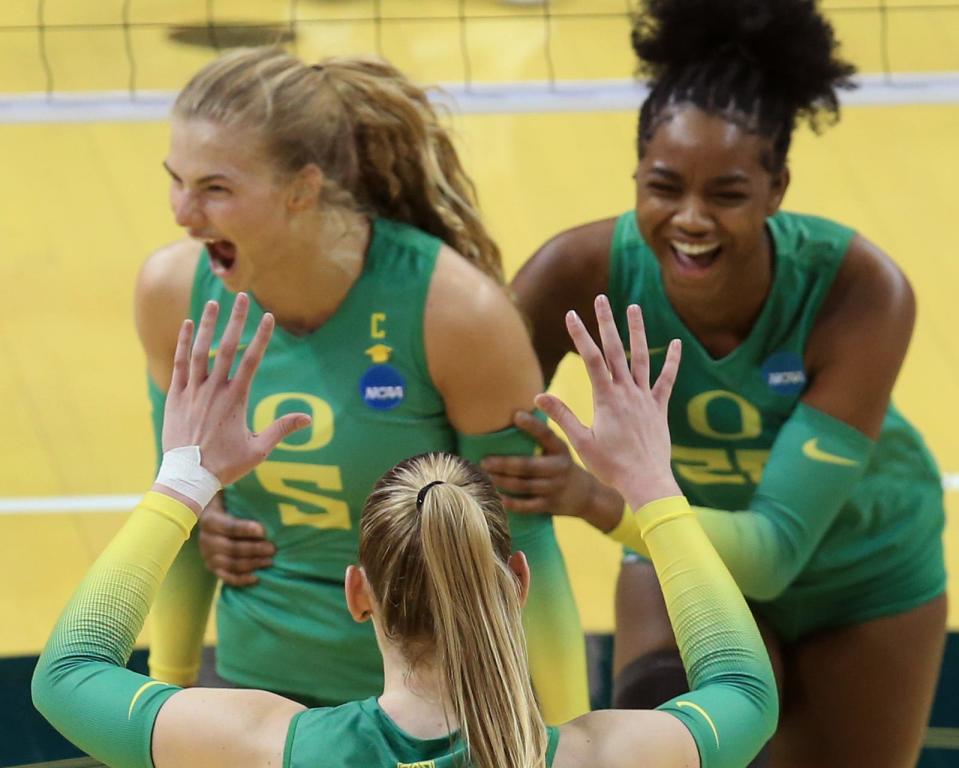
For the women’s soccer team, they’re going to a conference that might be a slight step down, but the fact that defending national champ UCLA is also joining the Big Ten probably makes it a moot point.
The middling women’s lacrosse program, however, could be in serious trouble. Three teams currently in the Big Ten — Maryland (14), Northwestern (eight) and Penn State (2) — have combined to win 24 of the 41 possible NCAA titles. They’ve also played in the national title game 11 other times.
Alec Dietz covers University of Oregon football, women's basketball and baseball for The Register-Guard. You may reach him at adietz@registerguard.com and you can follow him on Twitter @AlecDietz.
Follow Chris Hansen on Twitter@chansen_RG or email atchansen@registerguard.com.
This article originally appeared on Register-Guard: Can Oregon athletics stay competitive in crowded Big Ten conference?

